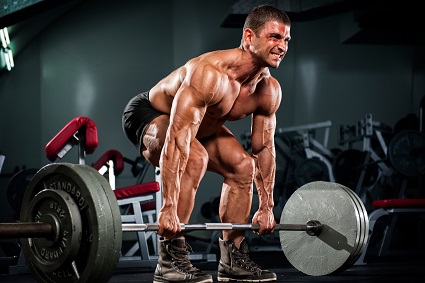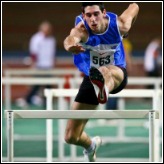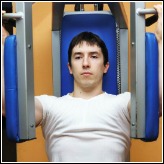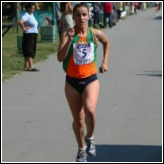Maximum Strength Training Routines That Gets Results

The first and probably the only job of all strength training routines are to develop the maximum force potential of the athlete – that is the contractile force of the muscle. The ability to exert the largest force possible is the primary aim.
If at the end of your maximum strength training phase you have not improved your potential to apply more force in a given movement, all your training will have been for nothing! Training for maximum strength is simple, but it’s not easy, it demands that you have the correct mind-set to get the most from your body.
And here is the reason why…
In sport, training for maximum strength is only part of a process to becoming more powerful. Because of this, you should always be mindful of the speed of movement in the extension phase of a lift. Slow extension phases in lifting will not reward you with powerful athletic movements. The problem with this however, is that maximum strength training routines demand that you train with very high loads.
However, very heavy loads cannot be lifted quickly – now you understand the problem!
So what’s the solution? The only way to overcome this is to try to move the weight as fast as you can, even though it cannot be moved quickly. The intention to move the load quickly must be evident. Under these circumstances you can understand how crucial having the correct mind-set will be in training.
The reward for training in this way is that you teach your nervous system to fire up on all cylinders. This in turn teaches your body to rapidly recruit the available muscle fibres all at once for that particular action. This is exactly what we want for optimum power development.
When you build strength for athletic movements you are aiming to improve two elements of your conditioning:
The maximum force of the muscle called Maximum Strength and…
The speed at which force is applied by the muscle normally referred to as Power.
Maximum Strength Training Routines
Maximum force can be developed through the use of two methods - hypertrophic and motor unit recruitment methods:
Hypertrophic Method
Strength to weight ratio is an important issue for all sports but especially to endurance athletes, jumpers and sprinters. Hypotrophic strength training routines are designed to increase your body mass. For this reason hypotrophic methods are not recommended for these sports. This training method involves work units of up to 3 sets with 8-12 repetitions using loads of 70-80% of your 1RM.
Motor Unit Recruitment
Maximum force can also be developed using methods which encourages motor units recruitment (MUR). The recommended method to acquire this training effect is 4 – 6 sets of 2-5 repetitions using loads of around 85-95% of your 1RM. This method is the preferred way for improving maximum strength for all athletes who propel themselves through space, such as jumpers and sprinters. The potential for weight gain due to hypertrophy is significantly less working in this way.
The force must be developed while paying particular attention to the extension speed of the hip, knee and ankle. This should be as fast or as sudden as humanly possible.
Additional Strength Training Routines
Eccentric Method
The extension phase of the lower limb in most dynamic sport movement is preceded by a fast flexion action around the hip, knee and ankle joints (causing the lengthening of the muscle). This lengthening of a muscle under load is referred to as an eccentric contraction. When you jump, leap or run, this eccentric action acts like a loaded spring and improves the concentric contraction which follows. And just like a spring the stiffer it is, the more energy it stores and the greater the force output it has.
When running and jumping, the eccentric action is forced on you. What I mean by this is, as you prepare to jump or move from one stride to the next as you run, your body mass in combination with your horizontal velocity and gravity loads your hip, knee and ankle joints. This causes flexion at these points.
If you lack the strength to control these large eccentric forces, the flexion around these joints will be deep and you will lack the stiffness in your spring for the preceding extension phase. You must therefore strengthen your hip, knee and ankle joints in a way that is specific to the load you will experience when you perform your athletic movement. Stiff springs are difficult to push together!
In the weights room, this is done by lowering a super maximum load, using 5 sets of 5 repetitions with loads of between 105-120% of your 1RM. Care must be taken to ensure the safety of the athlete while training in this way – help from a trainer or training partners will be needed in the concentric part of the movement.
All the training methods mentioned here are maximum strength routines which should be done in the maximum strength training phase of your program.
Sign Up For The Latest Track And Field News And Improve Your Athletic Performance!
From
"Maximum Strength Training Routines That Gets Results" Back To "Faster,
Stronger, Better – Your Shortcut To Improved Athletic Performance"
Learn more about strength training exercises







